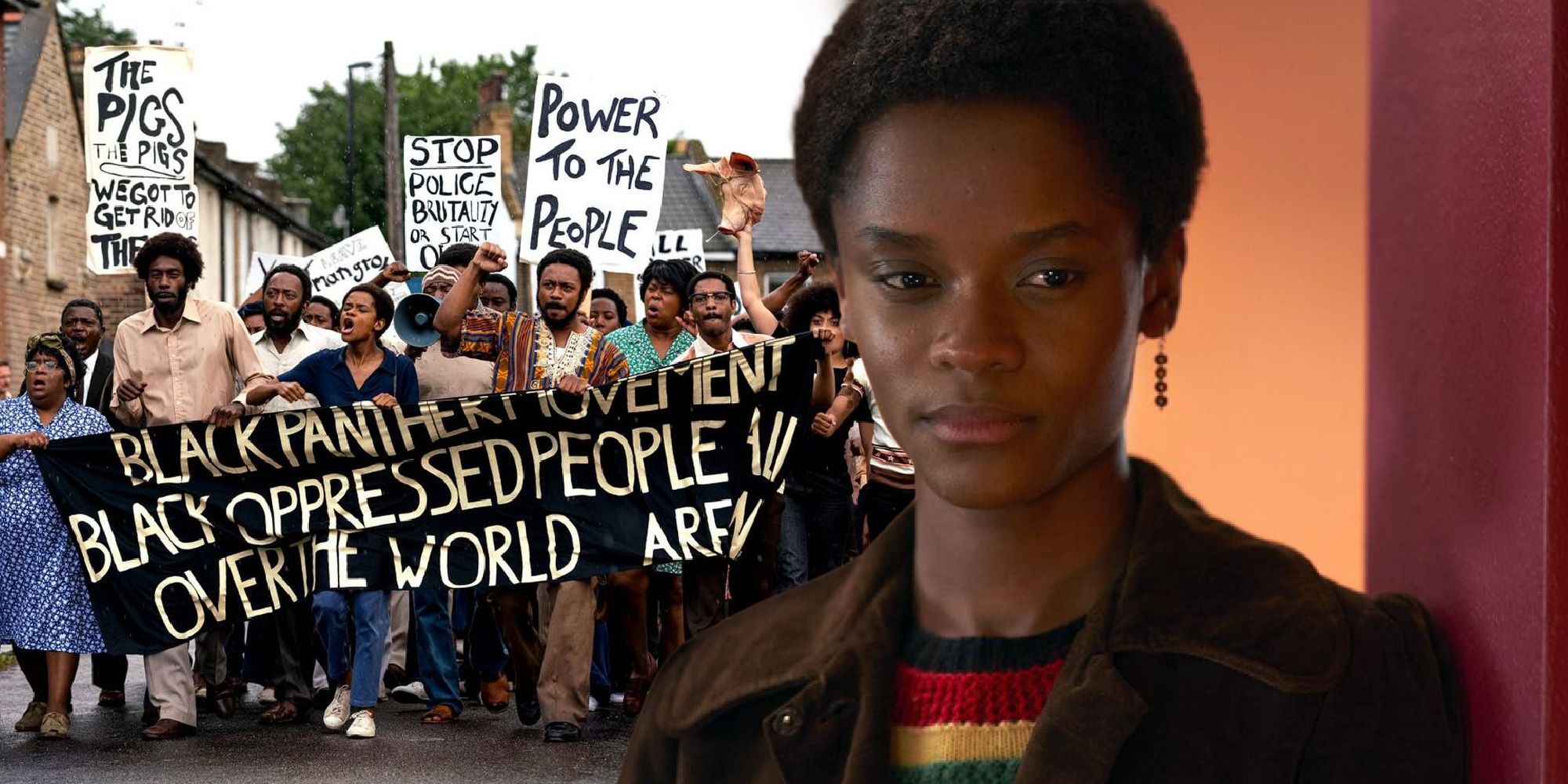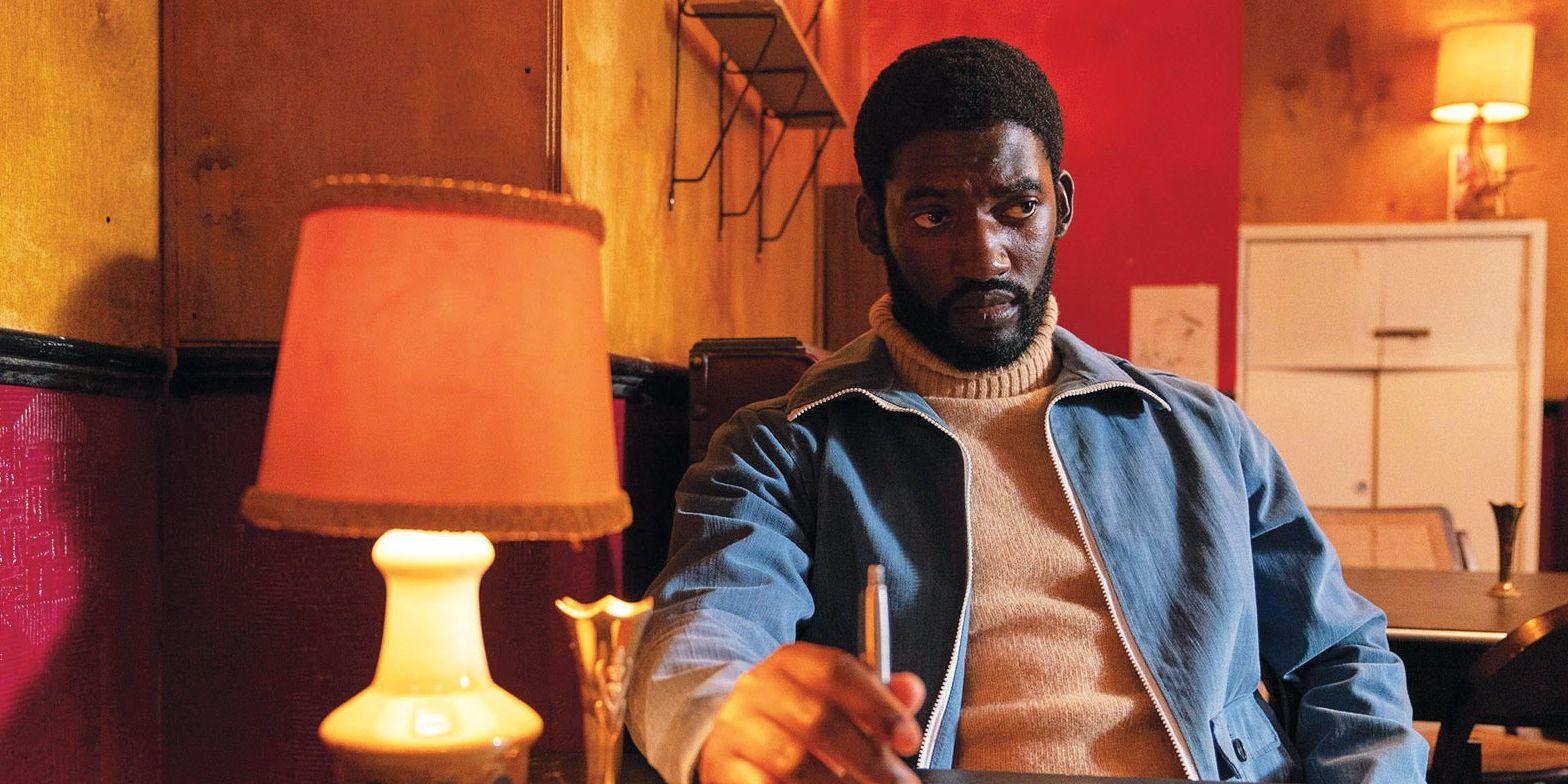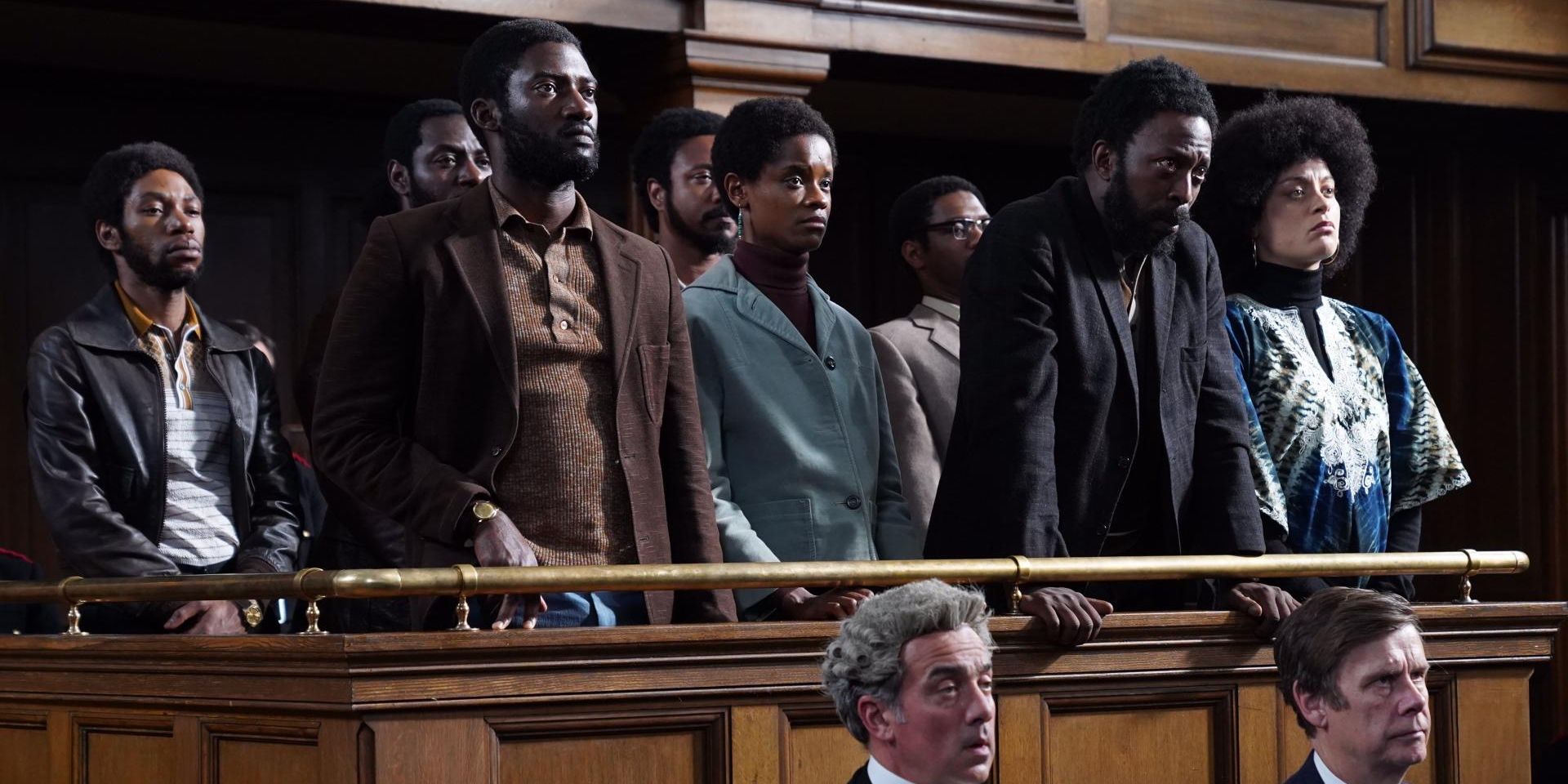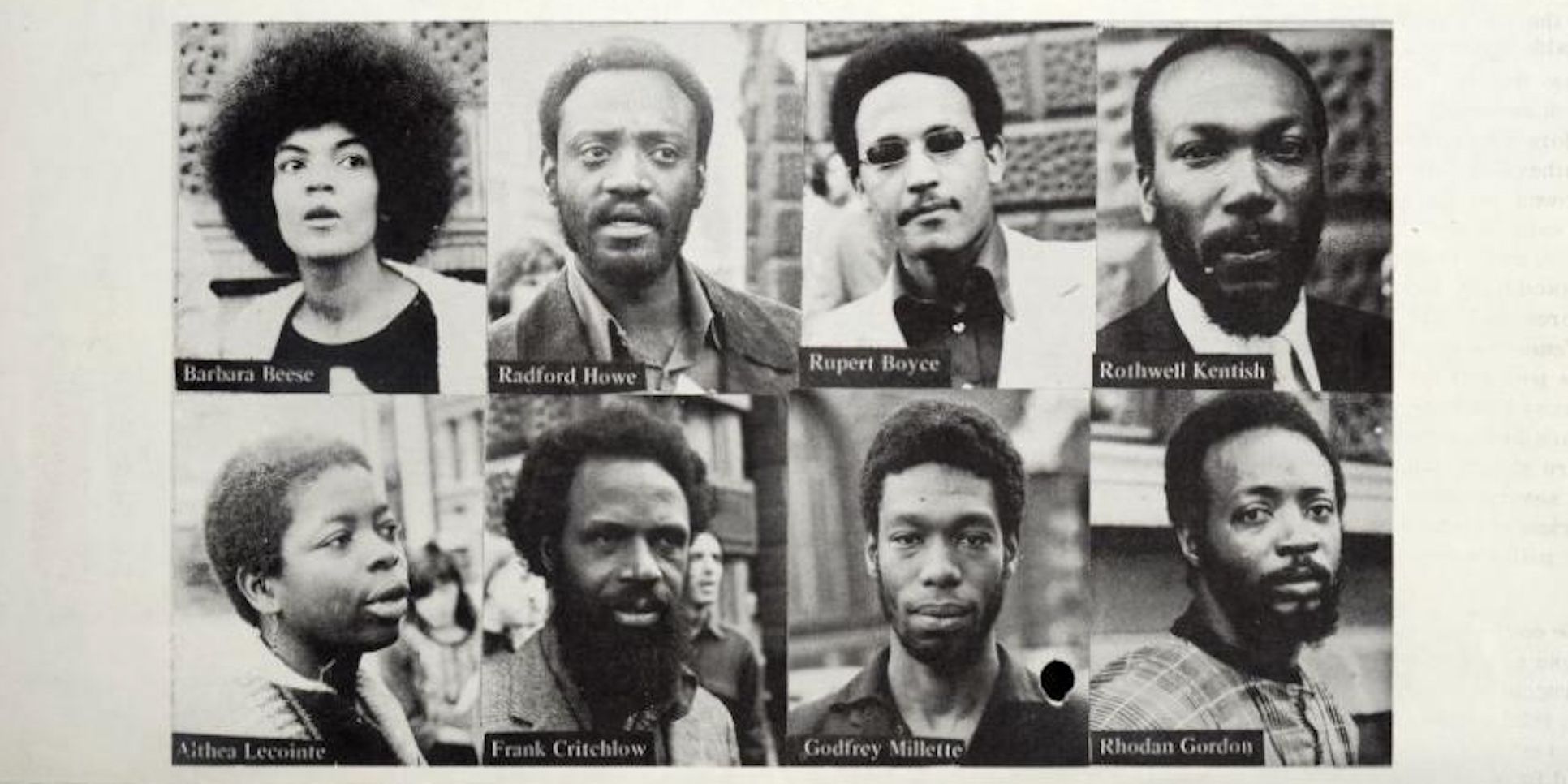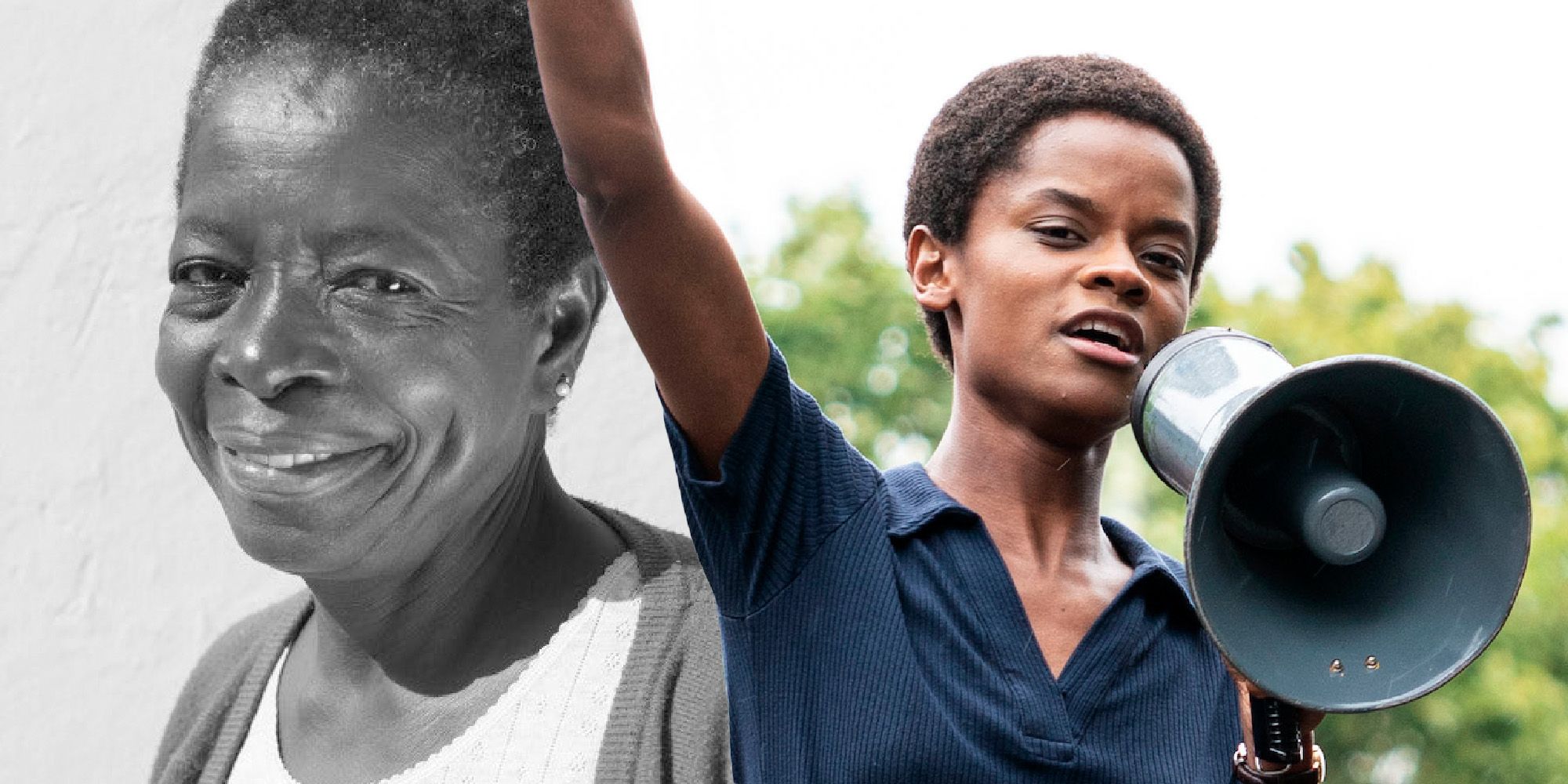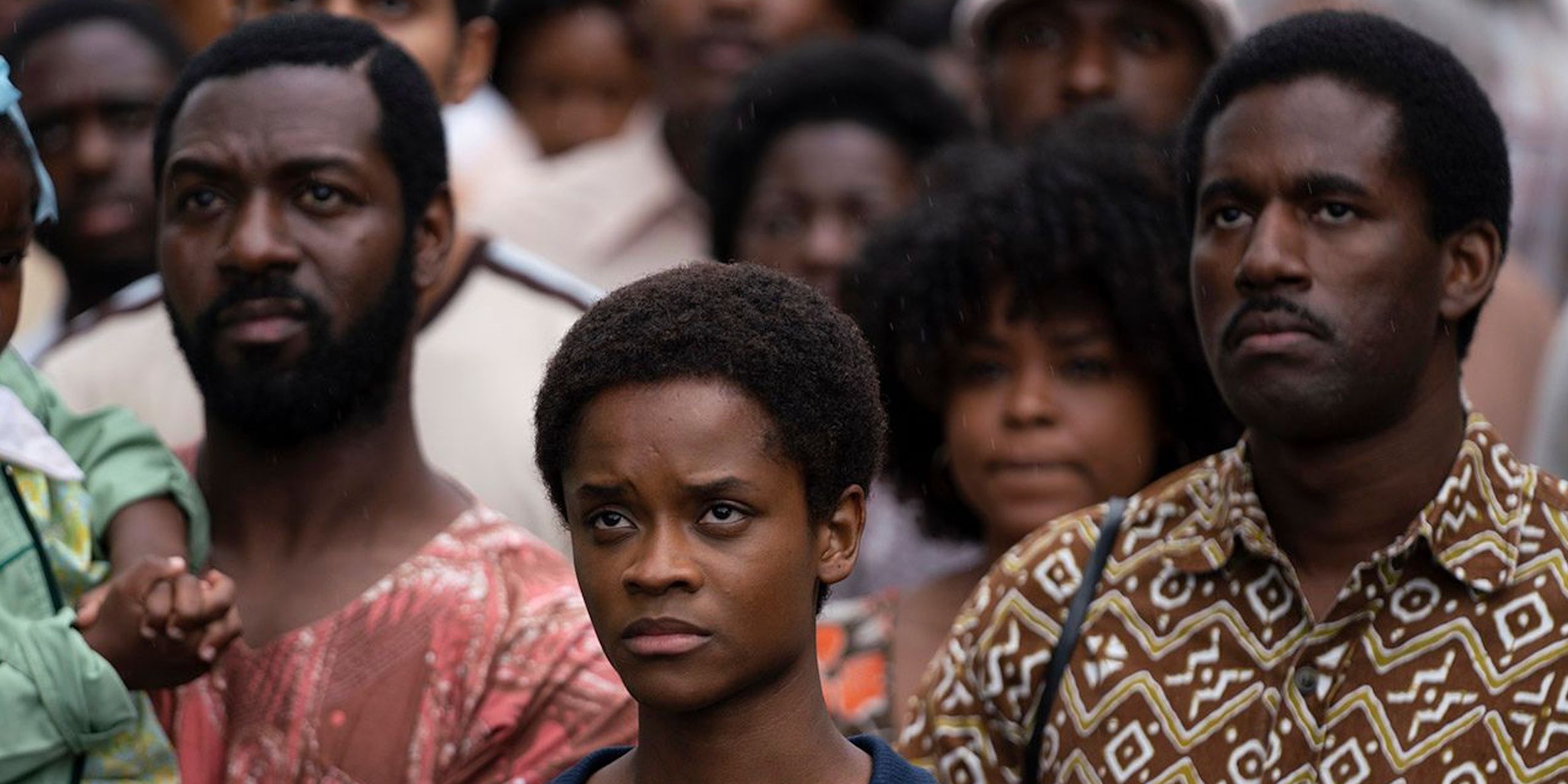Mangrove tells the true story of the Mangrove Nine and inevitably has to leave out a lot of the details, especially what happened after the events of the film. Mangrove is based on an important historical moment that was a turning point for Black British and West Indian immigrants living in London. Understanding more about the nine people involved in the court case, the historical context, and the British Black Panther movement illuminates how significant this film and the events it's based on still are today.
Mangrove is the first film in Steve McQueen's five-part series Small Axe that delves deep into the history and lives of West Indian immigrants living in London between the 1960s and 1980s. The film Mangrove revisits the true story of the Mangrove Nine, discussed in an article by The Guardian. They were a group of British Black activists who were put on trial for allegedly inciting a riot when they protested against the violent police targeting of local restaurant The Mangrove. As in the film, this restaurant was a central part of the community and the growth of Black radical traditions in London, but the film leaves out many of the important historical figures who were its customers. Similarly, the court case – streamlined to fit within the two hours of the film – had a lot more twists and turns and was the first time in UK history that racism within the Metropolitan Police was acknowledged in court.
Mangrove ends after the trial, and the characters know there is still a long fight ahead, but the story continues from there to the present day. The Mangrove was targeted and harassed by the police for two more decades before finally having to close, and the Black Power movement in the UK had many more battles. 50 years after the events in the film Mangrove, police brutality and racism continue both in the UK and the rest of the world.
The Real Mangrove Restaurant Explained (& What The Movie Leaves Out)
In the film, The Mangrove is a joyful Caribbean restaurant, owned by Frank Crichlow, in the Notting Hill area of West London. It was located at 8 All Saints Road and was the second of his cafes; the first was the El Rio. Per The Independent, like his other cafe, The Mangrove soon became a meeting place for some of the most influential Black radical voices of the time, as well as artists, writers, and celebrities. C.L.R James does feature in the film, but other well-known customers included musicians Sammy Davis Jr., Jimi Hendrix, Nina Simone, Bob Marley, and Marvin Gaye; actors Norman Beaton and Vanessa Redgrave; writers Lionel Morrison and Colin MacInnes; and many others. The Mangrove was full of artistic and revolutionary energy and even published its own newspaper The Hustler and played an important role in the Notting Hill Carnival that still continues to this day.
As one of the first Black-owned establishments in London, The Mangrove became the target of a lot of police harassment and racism. The film shows the restaurant being raided on false drug charges numerous times; in real life, the police raided the restaurant a total of 12 times between its opening in 1968 and the community protest in August of 1970. Even after the trial, the police continued to persecute Crichlow and The Mangrove with false charges and imprisonment, which, along with the rapid rise of gentrification in the area, forced him to close the restaurant in 1992. Today, a bar called the Little Yellow Door and, according to The Voice, a blue plaque honoring Crichlow remain.
What Mangrove Changes About The Real-Life Court Case
The way Mangrove depicts the real-life court case is very historically accurate. Though there were many trials of Black Radicals before this one, this case was the first time that the defendants used a different tactic to call out structural racism throughout the trial, with two of them defending themselves. The Mangrove Nine also requested an all-Black jury which, although they only got two Black jurors, brought race to the forefront of the trial from the very beginning.
What the film Mangrove does leave out is how the results of the trial actually went. All nine defendants were cleared of the main charge of inciting a riot, but four of the nine were still found guilty of lesser charges. Altheia Jones-Lecointe, the leader of the Black Panther party played by Letitia Wright, was one of the four who was found guilty of affray and assaulting police officers, though their sentences were turned into probation, and they didn't have to serve prison time.
What Happened To The Mangrove Nine After The Trial
It's already been mentioned that Crichlow (played by Shaun Parkes in the film) was harassed by the police for decades after the trial while he continued to be an influential leader in the community. He eventually won another court case in 1992 that cleared him of all charges and awarded him £50,000 in damages. Despite having to close The Mangrove, Frank went on to found the Mangrove Community Association and was a life-long activist before he passed away in 2010.
Jones-LeCointe continued to be a leader of the British Black Panther movement. She and Barbara Beese (played by Rochenda Sandall) are the only two members of the Mangrove Nine who are still alive today. The other members were Rupert Boyce, Rhodan Gordon, Darcus Howe, Anthony Innis, Rothwell Kentish, and Godfrey Millett. Many of them went on to be involved in the Black Power movement and to support Black communities in London. Howe (played by Malachi Kirby) helped found the Race Today Collective and became a broadcast journalist.
The British Black Panther Movement (& What Happened)
According to BlackPast, The Black Panther Movement in the UK was inspired by the Black Panthers in the U.S., particularly by Malcolm X's and Stokley Carmichael's visits to the UK in the early '60s. Obi Egbuna founded the British Black Panthers, along with Howe and others, in 1968 - the same year Crichlow opened The Mangrove. One thing the film doesn't address is that the British Black Panthers included South Asian activists as well, taking a wider definition of "Black" as including any people of color. Jones-LeCointe was also an early leader of the movement, which lasted until 1973 when it splintered off into various different radical groups such as the Race Today Collective and Brixton Black Women's Group.
Mangrove's Portrayal Of Racism In The UK (Then & Now)
The film Mangrove shows structural racism from the perspective of Black Caribbean immigrants to London as it was in the '70s, but not much has changed in the way police target and harass Black and immigrant communities, particularly in London. What has changed since the events of Mangrove is that UK law now recognizes racism within its police and government: the Mangrove Nine trial directly influenced the later 1976 Race Relations Act, which today has become the Equality Act of 2010. The film portrays racism in the late '60s and early '70s as community-based, targeted harassment and violence from the Met Police, especially focused on Crichlow as a business owner. Now, the communities in London, particularly the Notting Hill neighborhood, are home to immigrants from all over the world and have also been the location of rapid gentrification and rising inequality. The neighborhood where The Mangrove stood and the Mangrove Nine protest took place is just blocks away from the site of the Grenfell Tower fire in 2017, which the film nods at. Having marked 50 years since the landmark trial, Mangrove shines a light on a historical moment that is still relevant today, showing both how much has changed and how much still needs to change.

